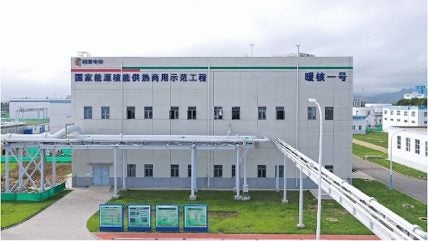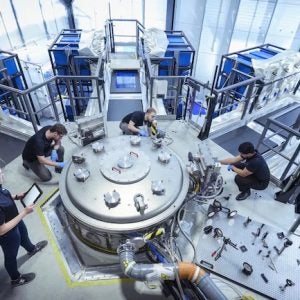
China’s Haiyang NPP in Shandong province now provides district heating to an area of nearly 13m square metres – 500,000 square metres more than last year as it begins its sixth heating season. State Power Investment Corporation (SPIC), parent company of Shandong Nuclear Power Company, says by 2026, it will be able to heat the city of Qingdao with a population of more than 10m.
The Haiyang district heating scheme, which began as a demonstration project, was put into operation in 2019. Each year it has been expanded, with heating capacity increasing from an initial 31.5 MW to 1,134 MW, and the area covered increasing 20-fold from an initial 700,000 square metres.
According to SPIC, safe and stable operation over the five heating seasons “fully verified that the engineering technology is replicable, the business model is promotable, and the cost-effectiveness is sustainable”. It also “provides a good model for large-scale cogeneration of nuclear power and has led to the follow-up implementation at multiple nuclear power plants”.
Over the past five winters the district heating scheme has provided 9.01m gigajoules of heat, saving 810,000 tonnes of coal and reducing carbon dioxide emissions by 1.49m tonnes. SPIC says that the air quality during winter in Haiyang “has improved significantly” and the area where the sea temperature is 2 degrees C hotter around the NPP has been reduced by 41 hectares since the heating scheme began.
Haiyang NPP currently features two Westinghouse AP1000 units and SPIC says that with the commissioning of subsequent units – two Chinese-design CAP1000 units currently under construction and up to four more proposed the long-term heating capacity will reach 200m square metres.
Plant owner Shandong Nuclear Power Company has cooperated with local thermal company Fengyuan Thermal Power to install a system that extracts non-radioactive steam from the secondary circuit of the two Haiyang AP1000 units. This is then fed through a multi-stage heat exchanger in an on-site heat exchange station. The heat is transferred to an off-site heat exchange station belonging to Fengyuan Thermal Power, from which heated water flows through municipal heating pipes to consumers.






